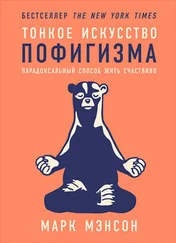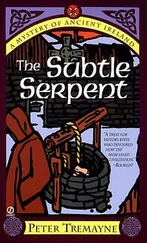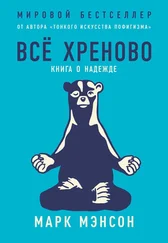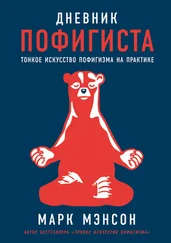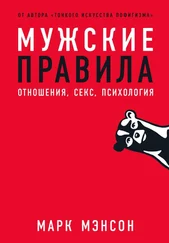Марк Мэнсон - The Subtle Art of Not Giving a F*ck
Здесь есть возможность читать онлайн «Марк Мэнсон - The Subtle Art of Not Giving a F*ck» весь текст электронной книги совершенно бесплатно (целиком полную версию без сокращений). В некоторых случаях можно слушать аудио, скачать через торрент в формате fb2 и присутствует краткое содержание. Год выпуска: 2016, Издательство: HarperCollins, Жанр: Самосовершенствование, на английском языке. Описание произведения, (предисловие) а так же отзывы посетителей доступны на портале библиотеки ЛибКат.
- Название:The Subtle Art of Not Giving a F*ck
- Автор:
- Издательство:HarperCollins
- Жанр:
- Год:2016
- ISBN:нет данных
- Рейтинг книги:5 / 5. Голосов: 2
-
Избранное:Добавить в избранное
- Отзывы:
-
Ваша оценка:
- 100
- 1
- 2
- 3
- 4
- 5
The Subtle Art of Not Giving a F*ck: краткое содержание, описание и аннотация
Предлагаем к чтению аннотацию, описание, краткое содержание или предисловие (зависит от того, что написал сам автор книги «The Subtle Art of Not Giving a F*ck»). Если вы не нашли необходимую информацию о книге — напишите в комментариях, мы постараемся отыскать её.
The Subtle Art of Not Giving a F*ck — читать онлайн бесплатно полную книгу (весь текст) целиком
Ниже представлен текст книги, разбитый по страницам. Система сохранения места последней прочитанной страницы, позволяет с удобством читать онлайн бесплатно книгу «The Subtle Art of Not Giving a F*ck», без необходимости каждый раз заново искать на чём Вы остановились. Поставьте закладку, и сможете в любой момент перейти на страницу, на которой закончили чтение.
Интервал:
Закладка:
On December 26, 1944, Second Lieutenant Hiroo Onoda of the Japanese Imperial Army was deployed to the small island of Lubang in the Philippines. His orders were to slow the United States’ progress as much as possible, to stand and fight at all costs, and to never surrender. Both he and his commander knew it was essentially a suicide mission.
In February 1945, the Americans arrived on Lubang and took the island with overwhelming force. Within days, most of the Japanese soldiers had either surrendered or been killed, but Onoda and three of his men managed to hide in the jungle. From there, they began a guerrilla warfare campaign against the U.S. forces and the local population, attacking supply lines, shooting at stray soldiers, and interfering with the American forces in any way that they could.
That August, half a year later, the United States dropped atomic bombs on the cities of Hiroshima and Nagasaki. Japan surrendered, and the deadliest war in human history came to its dramatic conclusion.
However, thousands of Japanese soldiers were still scattered among the Pacific isles, and most, like Onoda, were hiding in the jungle, unaware that the war was over. These holdouts continued to fight and pillage as they had before. This was a real problem for rebuilding eastern Asia after the war, and the governments agreed something must be done.
The U.S. military, in conjunction with the Japanese government, dropped thousands of leaflets throughout the Pacific region, announcing that the war was over and it was time for everyone to go home. Onoda and his men, like many others, found and read these leaflets, but unlike most of the others, Onoda decided that they were fake, a trap set by the American forces to get the guerrilla fighters to show themselves. Onoda burned the leaflets, and he and his men stayed hidden and continued to fight.
Five years went by. The leaflets had stopped, and most of the American forces had long since gone home. The local population on Lubang attempted to return to their normal lives of farming and fishing. Yet there were Hiroo Onoda and his merry men, still shooting at the farmers, burning their crops, stealing their livestock, and murdering locals who wandered too far into the jungle. The Philippine government then took to drawing up new flyers and spreading them out across the jungle. Come out, they said. The war is over. You lost.
But these, too, were ignored.
In 1952, the Japanese government made one final effort to draw the last remaining soldiers out of hiding throughout the Pacific. This time, letters and pictures from the missing soldiers’ families were air-dropped, along with a personal note from the emperor himself. Once again, Onoda refused to believe that the information was real. Once again, he believed the airdrop to be a trick by the Americans. Once again, he and his men stood and continued to fight.
Another few years went by and the Philippine locals, sick of being terrorized, finally armed themselves and began firing back. By 1959, one of Onoda’s companions had surrendered, and another had been killed. Then, a decade later, Onoda’s last companion, a man called Kozuka, was killed in a shootout with the local police while he was burning rice fields— still waging war against the local population a full quarter-century after the end of World War II!
Onoda, having now spent more than half of his life in the jungles of Lubang, was all alone.
In 1972, the news of Kozuka’s death reached Japan and caused a stir. The Japanese people thought the last of the soldiers from the war had come home years earlier. The Japanese media began to wonder: if Kozuka had still been on Lubang until 1972, then perhaps Onoda himself, the last known Japanese holdout from World War II, might still be alive as well. That year, both the Japanese and Philippine governments sent search parties to look for the enigmatic second lieutenant, now part myth, part hero, and part ghost.
They found nothing.
As the months progressed, the story of Lieutenant Onoda morphed into something of an urban legend in Japan—the war hero who sounded too insane to actually exist. Many romanticized him. Others criticized him. Others thought he was the stuff of fairy tale, invented by those who still wanted to believe in a Japan that had disappeared long ago.
It was around this time that a young man named Norio Suzuki first heard of Onoda. Suzuki was an adventurer, an explorer, and a bit of a hippie. Born after the war ended, he had dropped out of school and spent four years hitchhiking his way across Asia, the Middle East, and Africa, sleeping on park benches, in stranger’s cars, in jail cells, and under the stars. He volunteered on farms for food, and donated blood to pay for places to stay. He was a free spirit, and perhaps a little bit nuts.
In 1972, Suzuki needed another adventure. He had returned to Japan after his travels and found the strict cultural norms and social hierarchy to be stifling. He hated school. He couldn’t hold down a job. He wanted to be back on the road, back on his own again.
For Suzuki, the legend of Hiroo Onoda came as the answer to his problems. It was a new and worthy adventure for him to pursue. Suzuki believed that he would be the one who would find Onoda. Sure, search parties conducted by the Japanese, Philippine, and American governments had not been able to find Onoda; local police forces had been scavenging the jungle for almost thirty years with no luck; thousands of leaflets had met with no response—but fuck it, this deadbeat, college-dropout hippie was going to be the one to find him.
Unarmed and untrained for any sort of reconnaissance or tactical warfare, Suzuki traveled to Lubang and began wandering around the jungle all by himself. His strategy: scream Onoda’s name really loudly and tell him that the emperor was worried about him.
He found Onoda in four days.
Suzuki stayed with Onoda in the jungle for some time. Onoda had been alone by that point for over a year, and once found by Suzuki he welcomed the companionship and was desperate to learn what had been happening in the outside world from a Japanese source he could trust. The two men became sorta-kinda friends.
Suzuki asked Onoda why he had stayed and continued to fight. Onoda said it was simple: he had been given the order to “never surrender,” so he stayed. For nearly thirty years he had simply been following an order. Onoda then asked Suzuki why a “hippie boy” like himself came looking for him. Suzuki said that he’d left Japan in search of three things: “Lieutenant Onoda, a panda bear, and the Abominable Snowman, in that order.”
The two men had been brought together under the most curious of circumstances: two well-intentioned adventurers chasing false visions of glory, like a real-life Japanese Don Quixote and Sancho Panza, stuck together in the damp recesses of a Philippine jungle, both imagining themselves heroes, despite both being alone with nothing, doing nothing. Onoda had already by then given up most of his life to a phantom war. Suzuki would give his up too. Having already found Hiroo Onoda and the panda bear, he would die a few years later in the Himalayas, still in search of the Abominable Snowman.
Humans often choose to dedicate large portions of their lives to seemingly useless or destructive causes. On the surface, these causes make no sense. It’s hard to imagine how Onoda could have been happy on that island for those thirty years—living off insects and rodents, sleeping in the dirt, murdering civilians decade after decade. Or why Suzuki trekked off to his own death, with no money, no companions, and no purpose other than to chase an imaginary Yeti.
Yet, later in his life, Onoda said he regretted nothing. He claimed that he was proud of his choices and his time on Lubang. He said that it had been an honor to devote a sizable portion of his life in service to a nonexistent empire. Suzuki, had he survived, likely would have said something similar: that he was doing exactly what he was meant to do, that he regretted nothing.
Читать дальшеИнтервал:
Закладка:
Похожие книги на «The Subtle Art of Not Giving a F*ck»
Представляем Вашему вниманию похожие книги на «The Subtle Art of Not Giving a F*ck» списком для выбора. Мы отобрали схожую по названию и смыслу литературу в надежде предоставить читателям больше вариантов отыскать новые, интересные, ещё непрочитанные произведения.
Обсуждение, отзывы о книге «The Subtle Art of Not Giving a F*ck» и просто собственные мнения читателей. Оставьте ваши комментарии, напишите, что Вы думаете о произведении, его смысле или главных героях. Укажите что конкретно понравилось, а что нет, и почему Вы так считаете.


